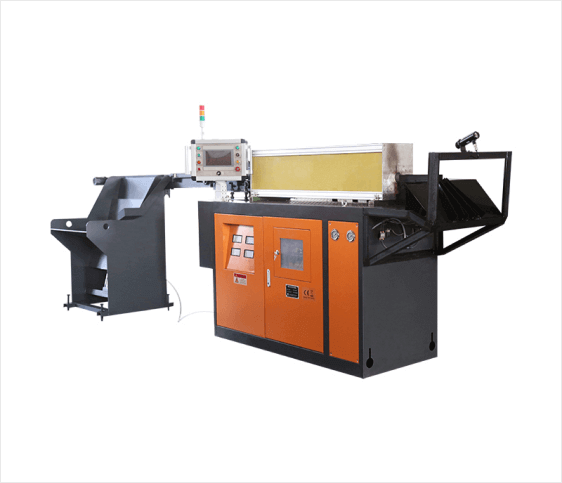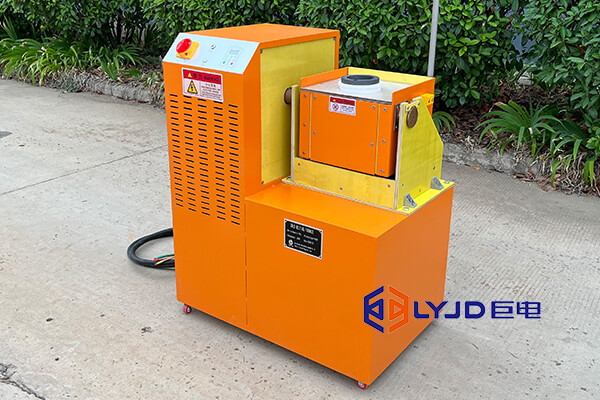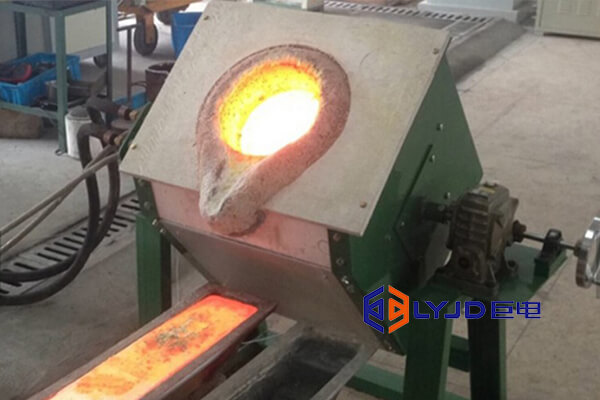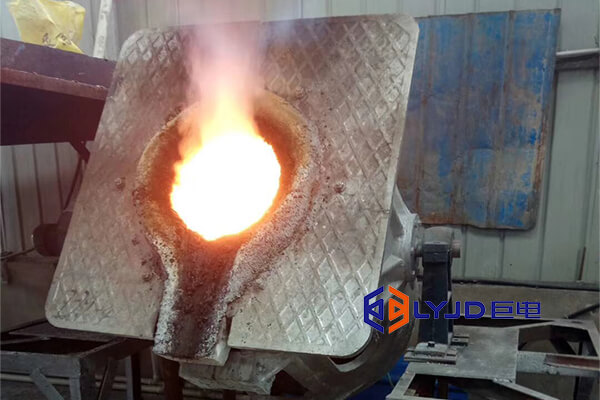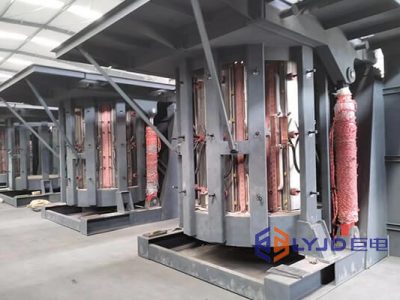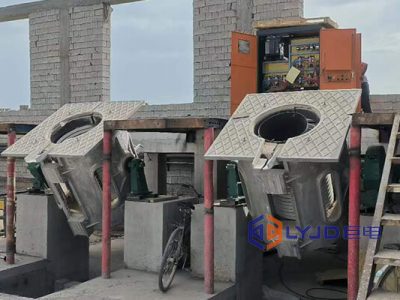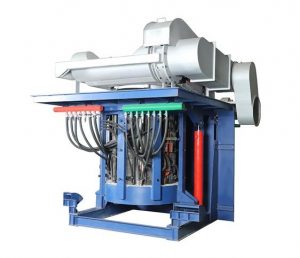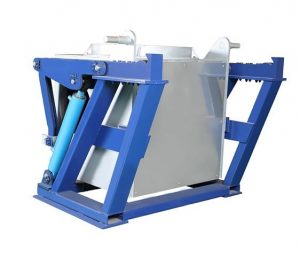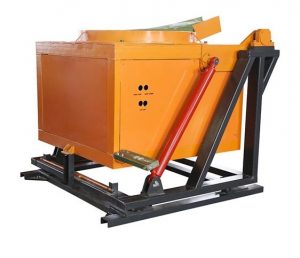An induction melter is a type of industrial equipment that heat and melt conductive materials, typically metals, using electromagnetic induction. In this post, Luoyang Judian will introduce the following aspects of an induction melter to you. You can follow the instructions below to read section by section, or you can just click to jump to the content you want to know.
| How an induction melter is made?
An induction heater typically consists of the following components:
Power Supply
The induction heater requires a power supply to generate the high-frequency alternating current (AC) needed for electromagnetic induction. This power supply can be a high-frequency generator or an inverter that converts standard AC power to high-frequency AC.
Induction Coil
The coil is a crucial component of the induction heater as it generates the alternating magnetic field that induces currents in the conductive material. The coil is often made of copper tubing or other conductive materials and is designed to fit around or near the material to be heated.
Cooling System
Induction heaters generate heat during operation, so a cooling system is essential to prevent overheating. This may include a water cooling system such as a closed cooling tower for the induction coil or other cooling mechanisms to maintain the system's temperature within safe limits.
Control System
A control system regulates the power output, frequency, and other parameters of the induction heater. This system ensures precise control over the heating process and can include temperature sensors, timers, and other monitoring devices.
Safety Features
Induction heaters may also include safety features such as overcurrent protection, overtemperature protection, and other mechanisms to ensure safe operation and prevent damage to the equipment or materials being heated.
Overall, the design and construction of an induction heater involve careful consideration of these components to ensure efficient and reliable operation for various industrial heating applications.
| How does an induction melter work?
An induction melter works by using electromagnetic induction to heat a conductive material, typically metal, to its melting point.
Induction Coil
The core component of an induction melter is an induction coil made of copper tubes. An alternating current (AC) passes through the coil, creating a rapidly changing magnetic field.
Eddy Currents
When a conductive material, such as metal, is placed inside the induction coil, the changing magnetic field induces electric currents within the material. These are known as eddy currents.
Resistance Heating
The eddy currents flowing through the conductive material encounter resistance, which generates heat due to the Joule heating effect. This heat gradually increases the temperature of the material.
Melting Point
As the material heats up, it reaches its melting point and transforms from a solid to a liquid state. The molten metal can then be poured or cast into molds for further processing.
Control and Safety
Induction melters are equipped with controls to regulate the power input, temperature, and other parameters to ensure safe and efficient operation.
An induction melter can heat and melt a wide range of conductive metals and alloys. Some common metals that an induction melter can heat and melt include:
Steel: Including carbon steel, stainless steel, and tool steel.
Aluminum: Both pure aluminum and aluminum alloys.
Copper: Pure copper as well as copper alloys like brass and bronze.
Cast Iron: Different grades of cast iron can be melted using induction melting.
Nickel: Nickel and nickel-based alloys such as Inconel and Hastelloy.
Gold and Silver: Precious metals like gold and silver can be melted using induction heating.
Titanium: Titanium and titanium alloys.
Zinc: Zinc and zinc alloys can also be melted using an induction melter.
Lead: Lead is another metal that can be melted efficiently with induction heating.
Tin: Tin and tin-based alloys.
These are just a few examples of the metals that can be heated and melted using induction melting technology. The versatility of induction melting makes it a popular choice for a wide range of industrial applications across various metalworking industries.
| What is the difference between arc melting and induction melting?
Arc melting and induction melting are two common techniques used for melting and processing metals. Here are some key differences between them.
Principle of Operation
Arc Melting: In arc melting, an electric arc is created between a consumable electrode and the material to be melted. The intense heat generated by the arc melts the material.
Induction Melting: Induction melting uses electromagnetic induction to heat a conductive material by inducing eddy currents within it. The material is heated by the resistance to these currents, resulting in melting.
Heating Source
Arc Melting: The heat source in arc melting is the electric arc itself, which reaches very high temperatures due to the electrical resistance of the material.
Induction Melting: In induction melting, the heat is generated by the resistance of the material to the eddy currents induced by the alternating magnetic field.
Control and Precision
Arc Melting: Arc melting can be less precise than induction melting in terms of temperature control and heating uniformity.
Induction Melting: Induction melting offers better control over temperature, heating rates, and heating uniformity due to the ability to adjust power input and frequency.
Applications
Arc Melting: Arc melting is commonly used for melting reactive metals, creating alloys, and producing small quantities of specialized materials.
Induction Melting: Induction melting is widely used in industrial applications for melting and processing various metals due to its efficiency, speed, and precise temperature control.
Both arc melting and induction melting have their advantages and are chosen based on the specific requirements of the melting process and the properties of the materials being processed.
| Conclusion
Induction melters are widely used in industrial applications for melting and processing various metals due to their speed, efficiency, and precise temperature control.
